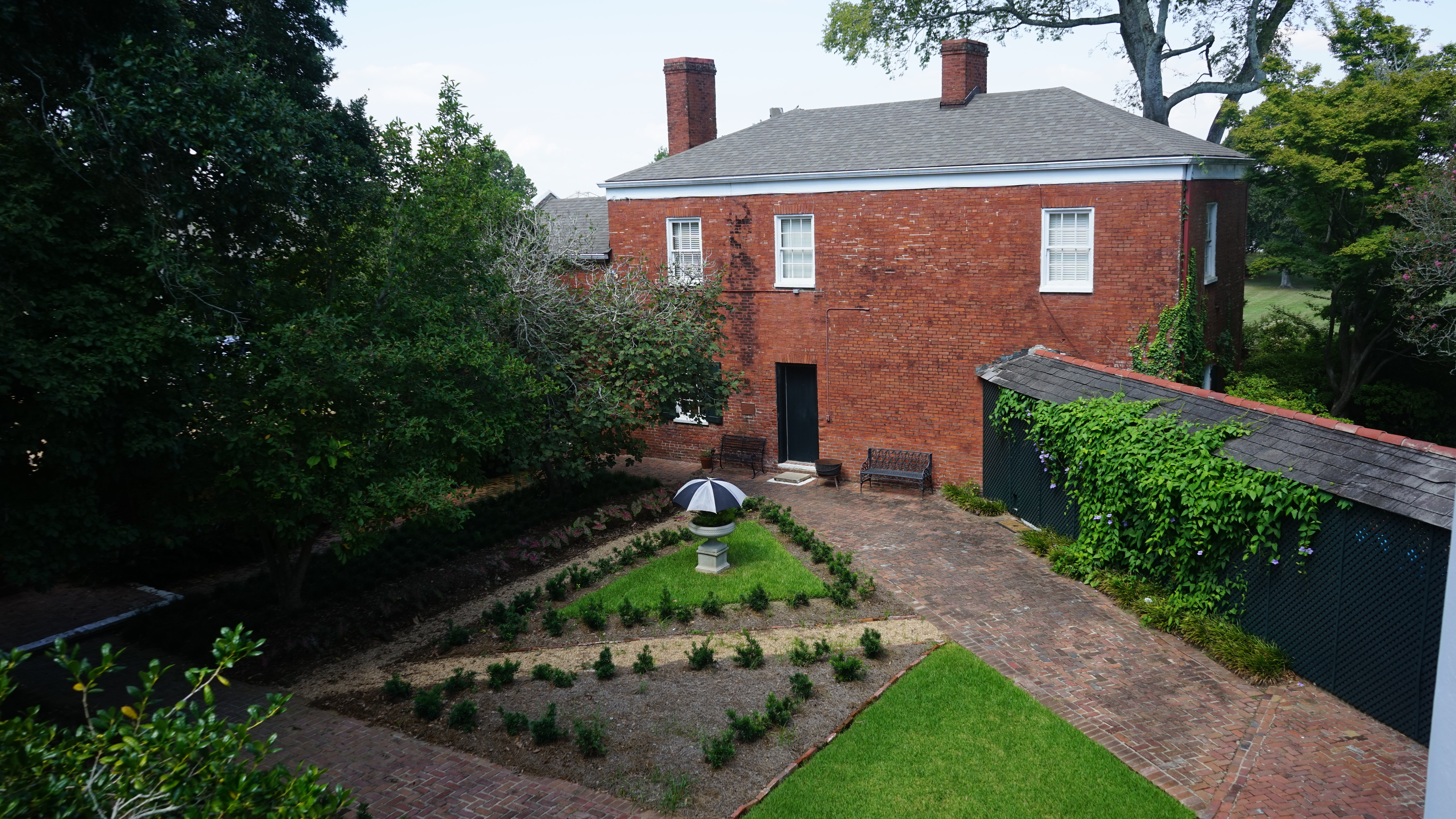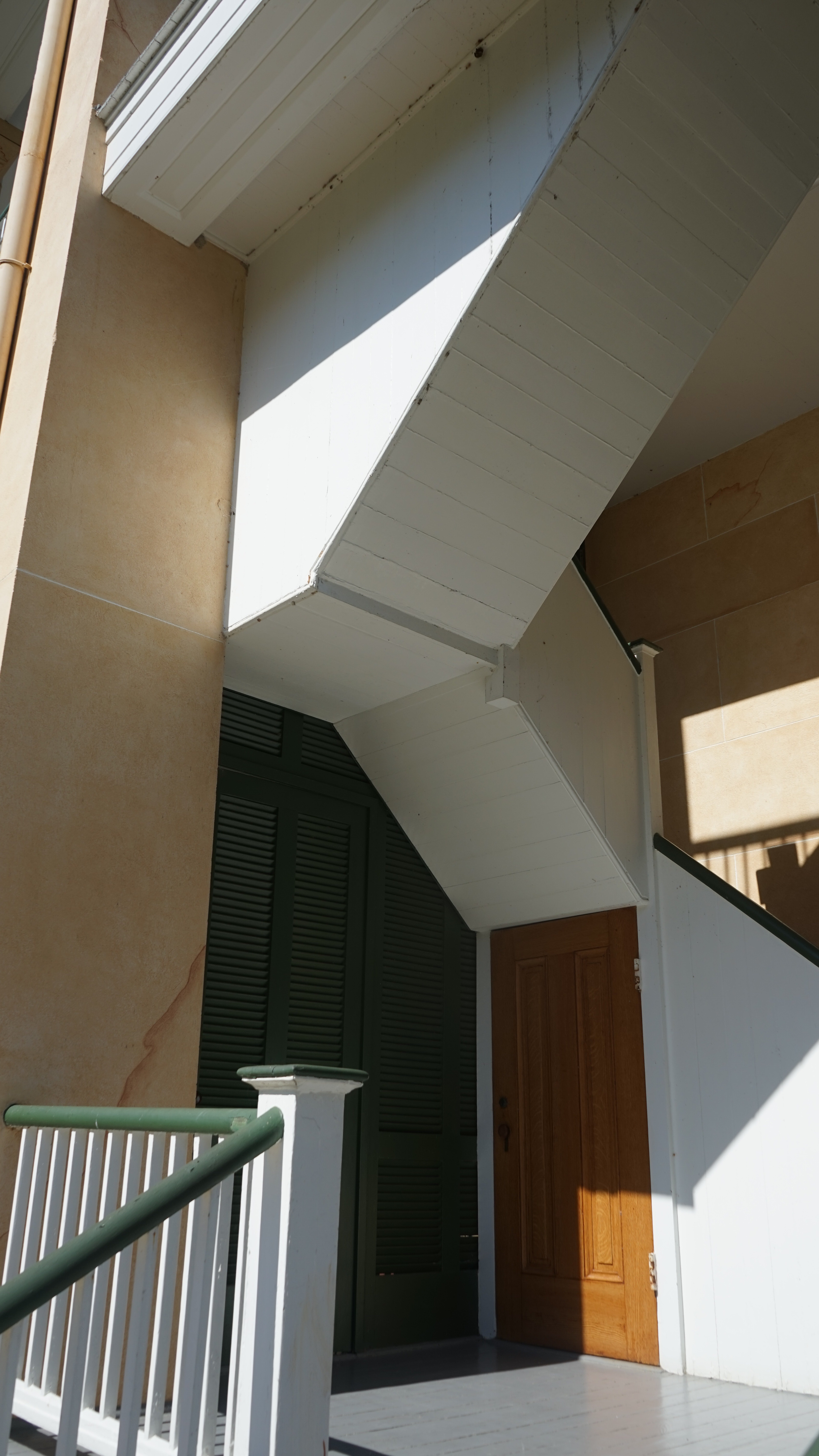Natchez Outbuilding Survey: Screened Walkways and Separate Entrances
The Natchez Outbuilding Survey has uncovered information about how enslaved servants and workers moved within urban and suburban landscapes. In Natchez, townhouses and suburban villas were accompanied by quarters for enslaved workers and other dependency buildings, all in close proximity to the main house. Often, separate walkways, stairways, and entrances were constructed for enslaved servants.
The historic photograph of Auburn depicts a non-extant two-tiered covered walkway leading from the quarters/kitchen building to the main house. At Rosalie (second image), the covered walkway connecting the quarters/kitchen to the house still remains. The exterior stairway and entrance at Melrose (third image) provide an example of dedicated spaces for enslaved servants. These spaces at Melrose were covered and screened from areas used by the family, intentionally placing enslaved servants and workers outside the public view. As the Natchez Outbuilding Survey progresses, we hope to better understand how enslaved peoples moved throughout their daily world and what role architecture played in this movement.

Auburn's slave quarters and kitchen building with two-tiered walkway.

Rosalie's screened walkway leading from the quarters/kitchen outbuilding.

Melrose's covered stairway and separate entrance for enslaved house servants.
Headline
Lorem ipsum dolor sit amet, consectetur adipiscing elit, sed do eiusmod tempor incididunt ut labore et dolore magna aliqua. Ut enim ad minim veniam, quis nostrud exercitation ullamco laboris nisi ut aliquip ex ea commodo consequat. Duis aute irure dolor in reprehenderit in voluptate velit esse cillum dolore eu fugiat nulla pariatur. Excepteur sint occaecat cupidatat non proident, sunt in culpa qui officia deserunt mollit anim id est laborum.